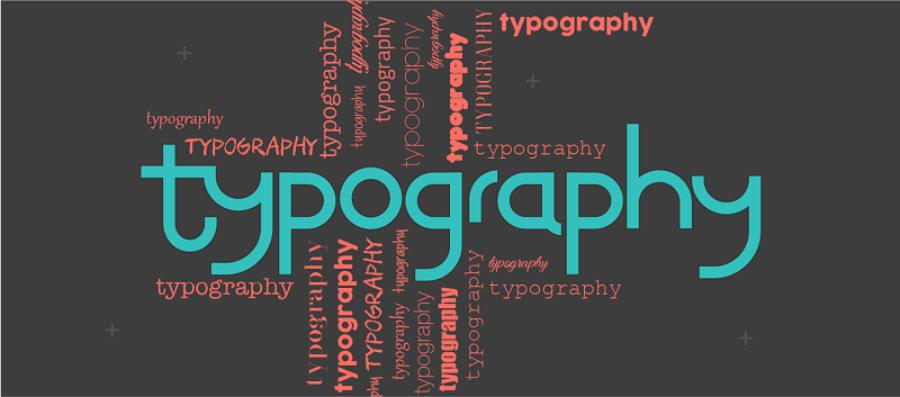Best Selling Products
Explore Fonts and Typography: Creative Design Trends 2025
Nội dung
- 1. Fonts and Typography: Basic Concepts
- 1.1. What is a font?
- 1.2. What is Typography?
- 1.3. The relationship between Font and Typography
- 2. History of Font and Typography Development
- 3. The Importance of Fonts and Typography in Design
- 4. "Decoding" the power of Fonts in design
- 4.1. The role of fonts
- 4.2 Basic Font Classifications
- 4.3. How to choose the right font
- 5. Font Trends 2025: Leading the Design Market
- 5.1. The rise of classical style
- 5.2. "Variations" from familiar lines
- 5.3. Simple and elegant in style
- 5.4. Focus on user experience
- 5.5 Bold and Powerful Fonts
- 5.6 Minimalism
- 5.6 Digital and 3D Fonts
- 6. How to Choose the Right Font for Your Design Project
- 7. Application of Fonts and Typography in design
- 7.1. Logo design
- 7.2. Website design
- 7.3. Design of printed publications
- 7.4. Social network design
- 8. Conclusion
Explore the concept of fonts and typography, understand the difference and how to apply them effectively. Update font trends 2025 to design impressive, professional "trendy" graphics.

In graphic design, fonts and typography play an important role not only in conveying messages but also in creating a unique mark for each design product. A correct understanding of fonts and typography will help designers not only enhance aesthetics but also optimize user experience. Join sadesign to explore the concept and font trends of 2025 so that you are always at the forefront of "trendy" design.
1. Fonts and Typography: Basic Concepts
Fonts and typography are two important terms in the field of graphic design and printing. Although closely related, they have separate characteristics and applications.
.jpg)
Text Typography Sadesign - 01
1.1. What is a font?
Font (or typeface) is a set of characters (letters, numbers, punctuation, ...) designed in a unified style. Each font has its own name (for example: Arial, Times New Roman, Roboto, ...) and represents a different personality and characteristics. Font is not only a writing tool, but also an aesthetic element, contributing to the beauty and style of the design. Each font has its own characteristics, which can be modern, classic or unconventional.
1.2. What is Typography?
Typography (or the art of writing) is the selection and arrangement of fonts in a scientific and harmonious way to convey messages effectively and aesthetically. Typography includes the selection of fonts, font sizes, spacing between letters, lines, paragraphs, as well as how to coordinate them with other design elements (colors, images, layout, ...) to create a harmonious and impressive whole. Typography is an art that requires an understanding of fonts, design principles, as well as the creativity and aesthetic ability of the designer.
Typography includes adjusting the spacing between letters (kerning), the spacing between lines (leading), and the arrangement of text within a particular design space.
The concept of typography is broader than fonts, as it also involves how fonts are combined and coordinated in a design project, creating balance and ease for the eye.
1.3. The relationship between Font and Typography
Fonts are the "ingredients", while Typography is the "recipe" to create a beautiful and effective typographic design. Fonts provide designers with available typefaces, while Typography helps them "mold" and arrange them creatively to achieve communication and aesthetic purposes. Fonts and Typography have a close relationship, complementing each other to create unique and impressive design works.
2. History of Font and Typography Development
Fonts and typography are not new concepts, but have existed for a long time in history. Since the early days of printing with manual printing, people have had the need to use unique fonts to convey their messages.
.jpg)
15th century : Johann Gutenberg invents the printing press and begins using the first typefaces.
19th Century : The development of printing fonts, especially when companies like Linotype and Monotype created modern typefaces.
20th-21st century : The advent of digital fonts has brought a wave of creativity in typography, allowing designers to create fonts suitable for each purpose.
Nowadays, with the strong development of technology, graphic design tools help designers easily choose and create suitable fonts for all design products, from logos, websites, to printed publications.
3. The Importance of Fonts and Typography in Design
In any graphic design project, fonts and typography play an important role in determining the aesthetics and ability to convey the message. The choice of fonts not only affects the appearance of the design but also affects the perception and reception of the viewer.
Aesthetics and Professionalism: Fonts create the first impression of a design. A beautiful and suitable font will make the product more professional and attractive. On the contrary, an inappropriate font choice will easily reduce the quality of the design product.
.jpg)
Enhance User Experience: Typography helps optimize the readability and comprehensibility of text. Especially in web design, effective use of typography makes it easy for users to access information and creates a pleasant feeling when reading.
Expressing the Message: Fonts have the ability to create personality and style for a product. A delicate, soft font can convey sophistication, while a bold, powerful font can convey assertiveness and dynamism.
Great! The topic you provided is very interesting and highly applicable in the design field. Below is a 3000-word SEO-standard article with the topic you requested, going into detail for each section:
4. "Decoding" the power of Fonts in design
In 2025, the world of Fonts continues to witness constant growth and innovation, with many new trends emerging, reflecting the changes in the way we communicate and receive information.
4.1. The role of fonts
Fonts play an important role in design, because they are not only a tool to convey information but also an element that expresses the personality and style of the brand and product. A properly selected font can:
Make an impression : Fonts can make a strong impression on viewers, helping them recognize and remember brands and products.
Message Conveying : Fonts can convey messages clearly and coherently, helping viewers easily absorb and understand the content.
Expressing personality : Fonts can express the personality and style of a brand or product, making them different and stand out.
Enhance aesthetics : Beautiful fonts can enhance the aesthetics of designs, making them more appealing and appealing.
4.2 Basic Font Classifications
Fonts can be classified into different groups based on their morphological characteristics and applications. The basic font groups include:
Serif: Fonts that have small feet or decorative strokes at the ends of letters, such as Times New Roman, Georgia. Serif fonts are often used in traditional printed documents, creating a classic feel and easy to read.
Sans-serif: Fonts without decorative serifs that have a modern style, such as Arial, Helvetica, and Verdana. These fonts are often used in digital design because they are easy to read on screens.
Slab Serif: A variation of serif, but with wider, squarer feet, such as Rockwell. This font has a strong feel and can make a big impact in advertising designs.
Script: Calligraphy style fonts, often used for luxury design projects, such as Brush Script, Pacifico.
Display: Fonts with unique and impressive designs, often used for large headlines or special design projects.
Decorative : Decorative fonts (eg Impact, Lobster,...) give a unique, personal feel, often used in titles and posters.
4.3. How to choose the right font
To choose the right font, consider the following factors:
Intended use : What is the font used for (e.g. logo design, website, printed publications, etc.)?
Target Audience : Who is the target audience of the design (e.g. children, adults, men, women, etc.)?
Design style : What is the design style of the product or brand (e.g. modern, classic, minimalist, etc.)?
Readability : Is the font easy to read and easy to look at?
Aesthetics : Is the font beautiful and harmonious?
5. Font Trends 2025: Leading the Design Market
With the constant development of technology and changes in user tastes, font trends also change dramatically every year. Let's take a look at some font trends that are predicted to take the throne in 2025.
.jpg)
5.1. The rise of classical style
Fonts with a classic, nostalgic style (e.g. serif, script) are gradually coming back and are popular. They bring a sense of familiarity, warmth, and at the same time show respect for traditional values. The return of the classic style is not just a passing trend, but also a search for sustainable, timeless values in the modern world.
5.2. "Variations" from familiar lines
Designers are constantly innovating and "transforming" familiar fonts (for example, sans-serif) to create new and unique fonts. Combining many different fonts in the same design will become a prominent trend. Designers will skillfully combine serif and sans-serif fonts to create a harmonious, yet unique whole.
This innovation helps fonts become more impressive and attractive. "Transformation" does not stop at changing the shape and lines of the letters, but also combines other design elements (colors, effects, ...) to create unique fonts with a strong personal mark.
5.3. Simple and elegant in style
Minimalism continues to dominate font design. Simple, elegant fonts (for example, sans-serif) are popular because they are easy to read, easy to apply, and suitable for many types of design. Simplicity does not mean monotonous or boring. Minimalist fonts can still express personality and style through the way they are selected, arranged, and combined with other design elements.
This trend focuses on fonts that are close, simple, and have a natural, handwritten feel. Such fonts create a sense of authenticity and intimacy, and are often used in advertising designs or to convey a message of nature.
5.4. Focus on user experience
Font design is increasingly focused on user experience (UX). Fonts are designed to be easy to read and easy to see on a variety of devices (computers, phones, tablets, etc.), while optimizing website loading speed. User experience is not only a web design issue, but also an important factor in all types of design, from logos, printed publications to web design.
5.5 Bold and Powerful Fonts
Bold fonts with strong and powerful strokes will continue to be a trend, especially in logo and headline design. These fonts easily grab attention and make a strong impression.
5.6 Minimalism
Minimalist fonts with simple, clean designs will become a mainstream trend in many fields, from web design to branding. Designers will focus on minimizing details while maintaining a high aesthetic.
5.6 Digital and 3D Fonts
With the advancement of digital printing and design technology, 3D and digital fonts will continue to become popular in advertising, video, and website design products.
6. How to Choose the Right Font for Your Design Project
Choosing the right font is no easy task. Designers need to consider many factors such as the target audience, the intended message, and the overall design style. Here are some tips for choosing a font:
Understand the Purpose: The font should reflect the nature and message of the project. For example, an educational website might use a serif font to create a sense of trust, while a fashion website would choose a modern, elegant font.
Consider Your Audience: Your audience also influences your font choices. If your design is aimed at a younger audience, bold and creative fonts will be more appropriate, while older audiences can easily relate to simple and easy-to-read fonts.
Combining Fonts: When using multiple fonts in the same design, it is important to ensure that they do not clash and create balance. It is important to choose fonts that contrast but still maintain harmony.
7. Application of Fonts and Typography in design
7.1. Logo design
Logo is the face of the brand, and Font is one of the most important elements that create the first impression of the logo. The font in the logo needs to express the personality and style of the brand, while ensuring readability and recognition.
Font Selection : It is important to choose a font that is appropriate to your industry, product, target audience, and brand style. For example, serif fonts are often used for traditional, long-standing brands, while sans-serif fonts are suitable for modern, dynamic brands.
Creative Typography : You can be creative with Typography by changing the size, spacing, and angle of the letters, or combining letters with visual elements and symbols to create unique and impressive logos.
7.2. Website design
Fonts play an important role in creating a beautiful, professional, easy-to-read website. It is necessary to choose a font that is suitable for the content and layout of the website, while ensuring compatibility across multiple browsers and devices.
Font selection : Choose fonts that are easy to read, easy to see, and suitable for the website design style. Avoid using too many fonts on a website, as this can be confusing to viewers.
Use Typography : Use Typography appropriately to highlight important content, create information hierarchy, and help viewers easily absorb and understand the message the website wants to convey.
7.3. Design of printed publications
Fonts used in the design of printed publications (e.g. books, newspapers, magazines, posters, brochures, etc.) must ensure readability and be consistent with the content and style of the publication.
Font Selection : Choose serif fonts for long paragraphs, making it easier for readers to follow and understand the content. You can use sans-serif fonts for titles and headings to make them stand out.
Use Typography : Use Typography flexibly to create beautiful, impressive publications. Pay attention to the spacing between letters, lines, and paragraphs to ensure the aesthetics and readability of the publication.
7.4. Social network design
Fonts used in social media design (e.g. cover photos, posts, banners, etc.) need to reflect the user's personality and style, while also attracting the viewer's attention.
Font selection : You should choose a unique, impressive font that matches the content and message that the user wants to share. You can use handwritten, decorative fonts to make a difference.
Use Typography : Use creative Typography to create beautiful posts and images that attract viewer interaction. Pay attention to the color, size, and position of the text to create the best effect.
Text Typography Sadesign - 01
8. Conclusion
Fonts and typography are not just tools to help us write but also an indispensable part in building brands and conveying messages in graphic design. Mastering the concept and application of typography will help designers create impressive products and attract viewers.















.jpg)





























